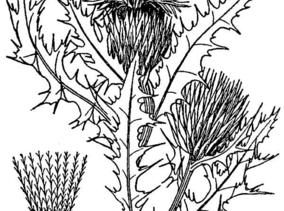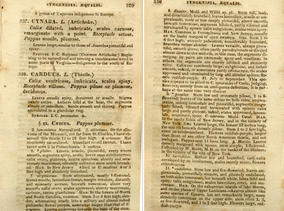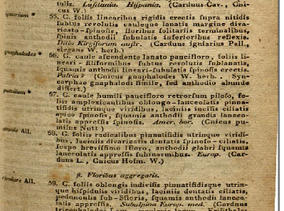You are here
Taxonomy
Cirsium pumilum (Nutt.) Spreng.
Nomenclature
-
Family: CompositaeGenus: Cirsium
-
Synonyms: 2
SUMMARY
Cirsium pumilum was first described by Thomas Nuttall as Carduus pumilus in The Genera of North American plants, and a catalogue of the species, to the year 1818. When the genus of New World thistles was renamed Cirsium, K. Sprengel described it as Cirsium pumilum in the publication Caroli Linnaei... Systema vegetabilium/Curante Curtio Sprengel. The formerly known species C. pumilum assumed the status of variety pumilum (also called Cirsium odoratum) when Cirsium hillii was integrated as Cirsium pumilum var. hillii in 1972 by B. Boivin. Var. hillii has also been called Cnicus hilli and Cirsium pumilum subsp. hillii.
Cirsium pumilum is a biennial or perennial herb, lasting at least 2, but no longer than 5 years. While it does bear close resemblance to other Cirsium species, it can be distinguished from look-alikes by the unique combination of a stem that is both hairy and spineless. It grows in dry, sunny areas, from open woods to praires and sandy soils. Flowering differs slightly by variety, but occurs in the summer for both. The variety pumilum is usually highly branched with broad phyllaries, while the variety hillii has a more simple branching structure and very narrow phillaries. Both produce pink to purple flowers. Distribution is highly correlated with variety in this species. C. pumilum var. pumilum is found on the Atlantic coastal plain, whereas C. pumilum var. hillii is located in the northern inland prairies. As all Cirsium, it is protected in some states and eradicated in others because of its relation to invasive, weedy plants. Also like other Cirsium, it attracts certain desirable insects and birds, and is therefore a good addition to butterfly gardens.






